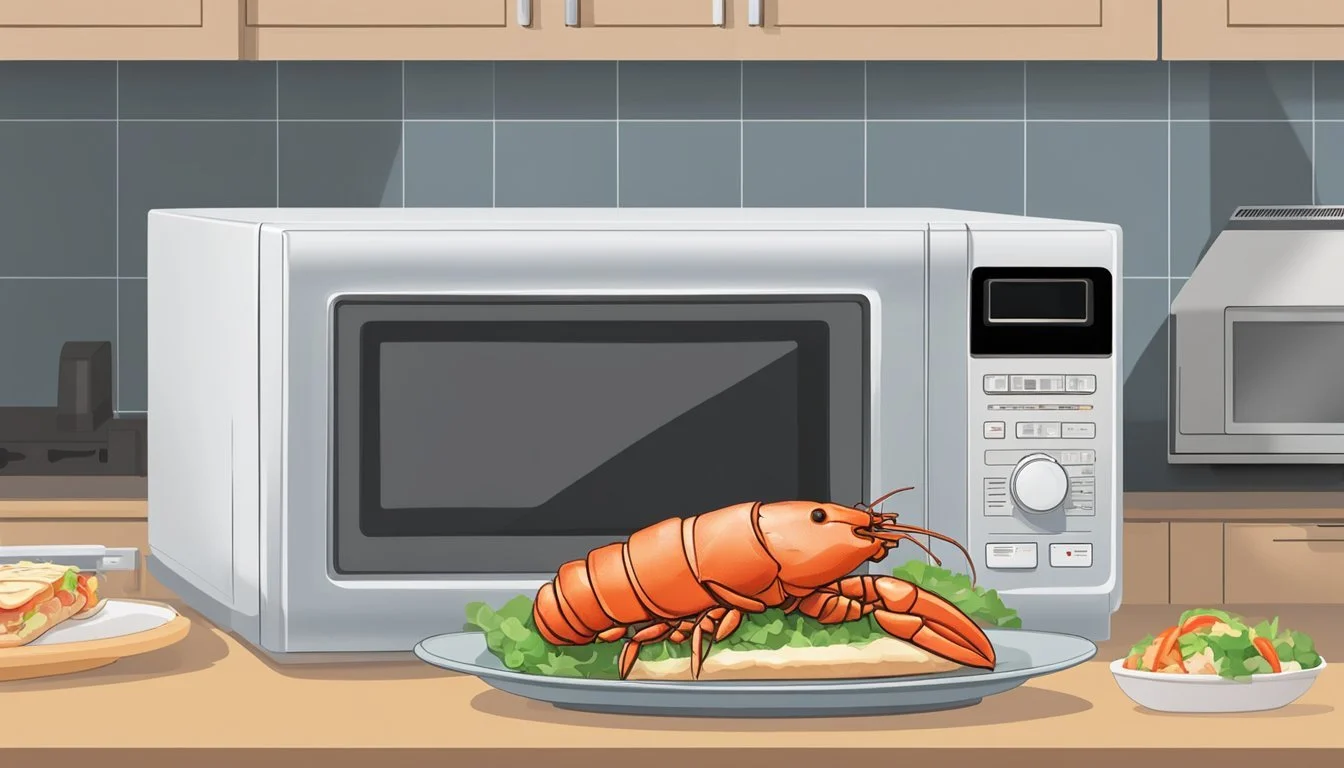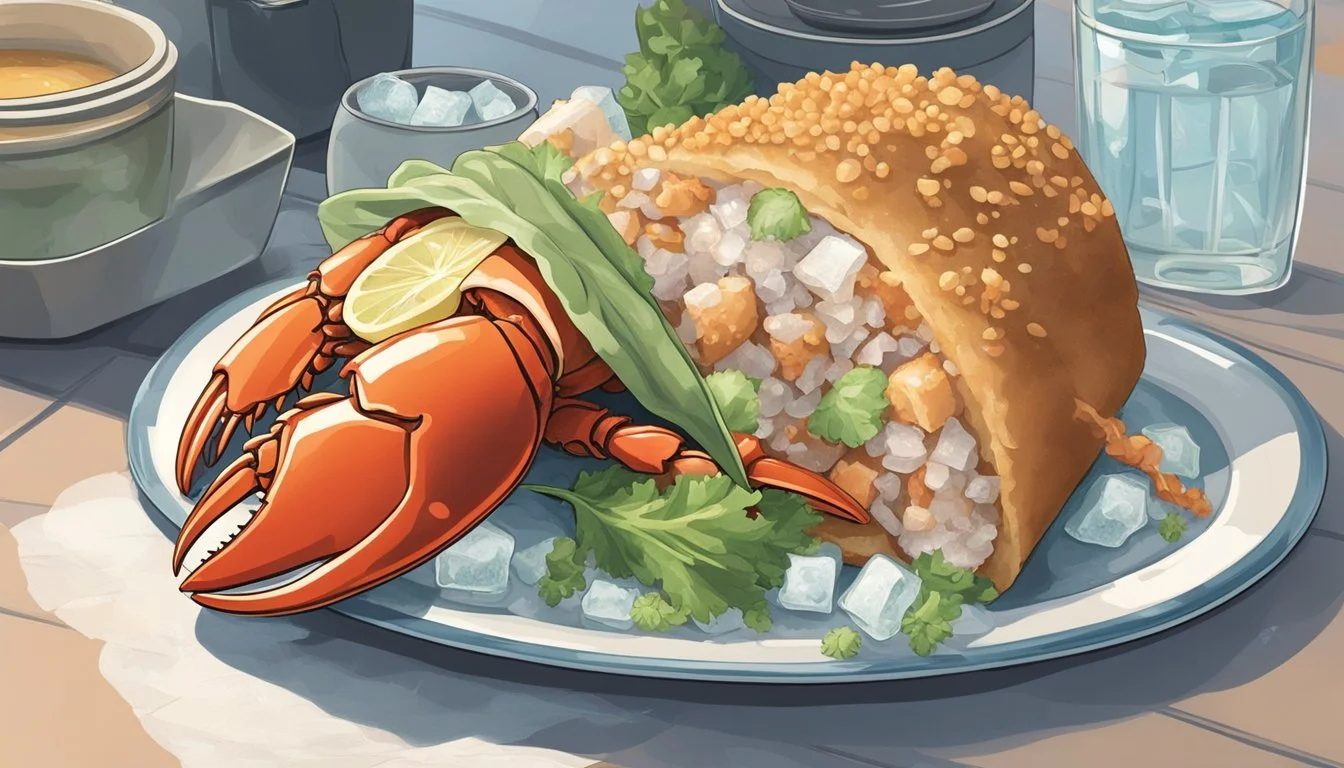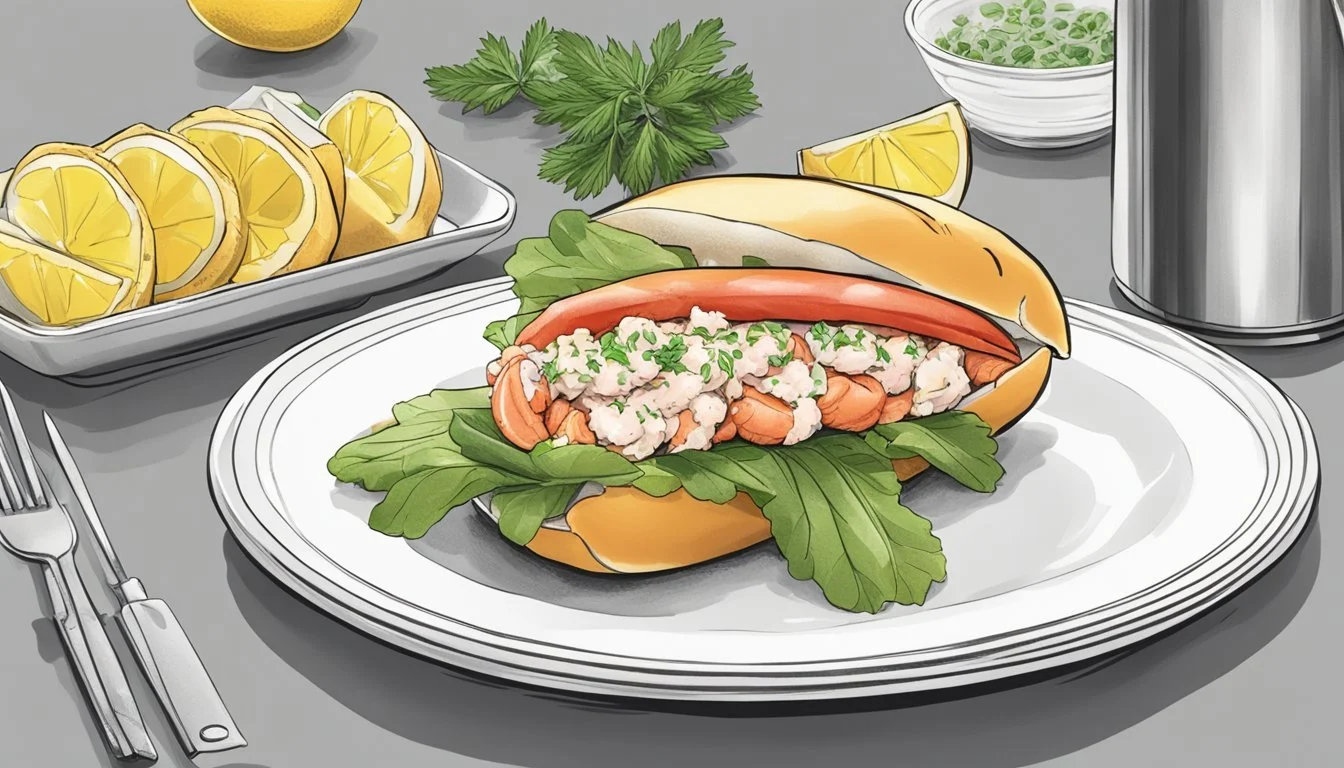Best Way to Reheat Lobster Roll
Tips for Freshness and Succulence
Reheating lobster rolls can be a delicate process if the goal is to preserve their fresh and succulent taste. The key lies in retaining the juicy tenderness of the lobster meat without making the roll soggy or the meat rubbery. Achieving this balance ensures that the flavors are as close as possible to when the lobster roll was first enjoyed.
When warming up a lobster roll, the approach varies slightly compared to reheating other types of seafood. The uniqueness of a lobster roll calls for careful attention to maintain its distinctive taste and texture. The process begins by allowing the lobster roll to reach near room temperature, which helps it reheat more evenly and reduces the chances of a soggy bun.
Various methods can be used to reheat lobster rolls, including using an oven or a steamer. These techniques help in gently warming the lobster meat while keeping the bun crisp and the overall flavor profile intact. Employing the correct method and timing can make a significant difference in the outcome, helping to preserve the essence of this beloved seafood classic.
Understanding Lobster Roll Fundamentals
A Lobster Roll is a delicacy where the quality of the lobster and the freshness play pivotal roles in its overall appeal. Proper storage and reheating techniques are essential to maintain the lobster roll's flavor and texture.
Anatomy of a Lobster Roll
The lobster roll consists primarily of lobster meat, often tossed in a light dressing or butter, and served in a soft roll, traditionally a New England-style hot dog bun. The key components are:
Lobster Meat: The star ingredient, typically sourced from the claws, knuckles, and sometimes the tail, which are the most tender parts of the lobster.
Bread Roll: A lightly toasted, buttered bun with a split on the top to cradle the lobster meat.
Dressing: Minimalistic, can be just butter, mayonnaise, or a combination of both, to enhance but not overpower the lobster's natural flavor.
Seasonings: A touch of seasoning, like chives, salt, and pepper, to complement the taste of the fresh lobster.
Freshness and Preservation
Here are specifics on how to handle lobster roll leftovers to preserve their freshness:
Refrigerator: Best for short-term storage, leftovers should be placed in a tightly sealed container to keep them fresh.
Protein Integrity: The delicate texture of lobster meat can be compromised if not stored correctly; lobster protein needs gentle care.
Flavor: To maintain the lobster roll's characteristic flavor, it's crucial to not only store it well but also to choose the right reheating method that doesn't introduce additional moisture or dry it out.
By respecting the lobster roll's components and understanding the basics of freshness and preservation, one ensures the best experience when reheating and enjoying this seafood treat.
Preparation for Reheating
Before reheating your leftover lobster rolls, one must take specific steps to ensure that the delicate seafood is preserved for optimal freshness and taste. Proper storage and appropriate preheating techniques are crucial.
Safely Storing Leftover Lobster Rolls
Leftover lobster rolls must be stored properly to maintain their quality. As soon as the lobster rolls are cooled to room temperature, they should be placed in an airtight container. To avoid any sogginess and potential spoilage, the following steps are recommended:
Wrap the rolls: Individually wrap the lobster rolls in aluminum foil or plastic wrap.
Refrigeration: Place the wrapped rolls in an airtight container and store them in the refrigerator.
Timing: Consume the refrigerated lobster rolls within the next 1 to 2 days for best quality.
Preheating Techniques
When reheating lobster rolls, the objective is to warm them through to an enjoyable temperature without compromising their texture and moisture content.
Oven: Preheat your oven to 350°F (175°C). This method circulates heat evenly, gently bringing the lobster back up to temperature.
Step 1: Remove the rolls from the refrigerator and let them sit at room temperature for about 10-15 minutes.
Step 2: Place the rolls on a baking sheet and lightly tent with foil to prevent drying out.
Stovetop: Reheating on a stovetop is best achieved using a steamer insert.
Step 1: Fill a pot with an inch of water and bring to a simmer with the steamer insert in place.
Step 2: Steam the rolls with the lid on for a few minutes until they reach the desired internal temperature.
Grill: Preheat the grill to a medium setting for a smoky flavor and a touch of crispness on the bread.
Step 1: Wrap the rolls in foil to avoid direct contact with the grill grates.
Step 2: Place the wrapped rolls on the grill for a short duration, monitoring closely to prevent charring.
For each method, it's essential to avoid overheating as it could lead to a rubbery and tough lobster texture. Instead, aim for a gentle and gradual reheating process.
Reheating Methods Overview
Choosing the right reheating method is crucial to preserving the lobster roll's quality. Each technique has specific steps that ensure the roll remains moist and flavorful.
Oven Method
For the oven method, preheat the oven to 350°F (175°C). Position the lobster roll, if possible still in its shell, on a baking tray and cover it with aluminum foil to retain moisture. Add a pat of butter on top of the lobster for enhanced flavor and moisture, then heat for about 10 minutes, careful not to overcook.
Stovetop Method
The stovetop method employs gentle heat to warm the lobster roll evenly. Heat a skillet on medium heat and add a small amount of butter or oil. Wrap the roll in foil to prevent direct contact with the heat. Warm each side for about 1-2 minutes until heated through.
Microwave Method
Using the microwave provides a quick option. Place the lobster roll on a microwave-safe dish and cover it with a damp paper towel. This will add moisture to the environment and prevent drying out. Microwave on medium power in 30-second intervals, checking for even warmth.
Grill Method
Preheat the grill to a low setting for the grill method. Wrap the lobster roll in foil with added butter and place on indirect heat. Close the grill cover and allow it to reheat for 7-10 minutes, monitoring to avoid charring.
Remember to always use heat-resistant utensils and safety precautions when handling hot food and surfaces.
Step-by-Step Reheating Instructions
To ensure the lobster roll remains fresh and succulent, it's crucial to reheat it with care. The following methods outline how to gently warm up your leftover lobster while preserving its moisture and flavor.
Oven Reheating Process
Preheat the oven to 350°F (175°C).
Prepare: Place the lobster roll on a baking sheet, lightly tent it with foil, and add a pat of butter on top for added moisture.
Heat: Warm the lobster roll in the preheated oven for about 10 minutes or until it’s thoroughly heated.
Stovetop Reheating Process
Pan Preparation: Heat a skillet over medium heat and add a small amount of melted butter or broth.
Reheat: If the lobster is in the shell, place it shell-side down in the pan. If out of the shell, wrap it in a paper towel before placing it in the skillet. Cook for a few minutes until just warmed through.
Microwave Reheating Tips
Prep: Place the lobster roll on a microwave-safe plate and cover it with a damp paper towel to retain moisture.
Microwave: Heat on medium power in 30-second intervals, checking after each interval to avoid overcooking.
Grilling Reheating Technique
Setup: Preheat the grill to a medium heat setting.
Grill: Wrapped in foil, place the lobster roll on the grill. The foil helps to retain moisture. Grill for about 5-10 minutes, depending on the size of the lobster roll.
Seasoning and Flavor Enhancement
When reheating a lobster roll, the proper use of butter and oils, along with a careful selection of herbs and spices can greatly enhance the roll's flavor profile without overpowering the natural succulence of the lobster meat.
Butter and Oils
Butter is central to both the cooking and reheating process of a lobster roll. A dollop of melted butter can be brushed onto the lobster meat prior to reheating, ensuring it remains moist and adding a rich, creamy taste. In addition to butter, a drizzle of olive oil fortified with flavor can add a subtle, fruity undertone that complements the lobster.
Key Oils:
Butter: for a classic richness
Olive Oil: for a lighter touch
Herbs and Spices
Herbs and spices should be used sparingly to accentuate the flavors without masking the lobster. A pinch of salt and pepper can elevate the natural sweetness of the lobster. Adding lemon juice provides a bright acidity, cutting through the richness of the butter. For more complexity, a hint of garlic can be introduced, either finely minced or as a gentle rub. Chives or other fresh herbs can serve as both a garnish and a fresh burst of flavor, while tailored seasonings like Old Bay can bring a coastal zest to the dish.
Recommended Additions:
Salt and Pepper: for basic seasoning
Lemon Juice: for a hint of acidity
Garlic: minced, for a subtle depth
Chives: chopped, for freshness
Seasonings: specific blends for additional character
Safeguarding Lobster Quality and Safety
When reheating lobster rolls, it is crucial to maintain the quality and safety of the lobster meat. Two key factors to consider are the proper heating temperatures to eliminate bacteria and techniques to avoid overcooking which could impair texture and juiciness.
Proper Heating Temperatures
To ensure the safety of reheated lobster, one should heat the meat to an internal temperature of 145°F. Using a meat thermometer, they can verify that this temperature is reached, which the FDA recommends for eliminating harmful bacteria. It is essential to check the temperature in several spots of the lobster roll to avoid cold spots and ensure thorough reheating.
Avoiding Overcooking
Maintaining the tenderness and juiciness of lobster meat during reheating requires a careful approach to avoid overcooking:
One must use low to moderate heat to gradually warm the lobster.
Monitor the lobster closely, removing it from heat as soon as it reaches the recommended internal temperature.
It is advised not to heat the lobster more than necessary, as prolonged exposure to heat can make the meat tough and dry.
Serving and Presentation
The presentation of a lobster roll is key to enhancing its flavor profile and should be treated with as much importance as the reheating process. Proper accompaniments and plating techniques can elevate the dining experience.
Accompaniments and Sides
A well-chosen side dish not only complements the taste of the lobster roll but also adds visual appeal to the plate. Consider the following options:
Salad: A light garden salad with a vinaigrette dressing balances the richness of the lobster.
Seafood Soup: A cup of clam chowder or a seafood broth can act as a warm, comforting starter.
Seasoned Fries: Fries with a hint of sea salt or Old Bay seasoning pair well with the succulent lobster meat.
Plating Techniques
The lobster roll itself should be the star of the plate. Follow these guidelines for an aesthetically pleasing presentation:
Sauce Artistry: If using lobster sauce or mayonnaise, apply it with precision to avoid overpowering the lobster.
Lobster Placement: Ensure the lobster is prominently displayed atop the roll, allowing its tenderness and freshness to entice the diner.
Garnishing: A sprinkle of finely chopped chives or parsley can add a pop of color and enhance the flavor profile.
Alternative Uses for Leftover Lobster
Leftover lobster offers a wealth of opportunities for culinary creativity. One can easily transform it into a different meal or use it to enhance homemade broths, ensuring no part of this luxurious seafood goes to waste.
Lobster-inclusive Recipes
A few innovative recipes that can breathe new life into leftover lobster include:
Lobster Salad: Combine lobster meat with mixed greens, avocados, and a citrus vinaigrette.
Lobster Macaroni and Cheese: Fold chunks of lobster into a creamy cheese sauce and pasta, topped with breadcrumbs.
Grilled Lobster: Brush lobster meat with garlic butter and grill for a smoky flavor.
One should be mindful to use gentle reheating methods to maintain the lobster’s tender texture.
Creating Lobster Stocks and Broths
Leftover lobster shells are the foundation for a rich lobster stock or broth. Here’s a simple method:
Sauté lobster shells in a bit of oil until they are a deep red color.
Deglaze with white wine (optional), then fill the pot with water.
Add aromatics such as onions, carrots, celery, and herbs.
Simmer for 1-2 hours, then strain.
This lobster stock can enhance the flavors of seafood soups like lobster bisque or can be used as a base for risottos. It brings a deeper complexity compared to using regular chicken broth or chicken stock.
Food Safety and Storage
Ensuring the safety and quality of a lobster roll when storing and reheating leftovers is paramount. Proper techniques prevent food-borne illness and maintain freshness.
Refrigeration Best Practices
When refrigerating leftovers, one should always store the lobster roll in an airtight container. This shields it from absorbing other flavors in the refrigerator and also minimally exposes it to air, which can dry out the meat and promote bacterial growth. Lobster rolls should be consumed within 1-2 days, as seafood is highly perishable.
Temperature: The refrigerator should be set below 40°F (4°C) to effectively slow down bacterial activity.
Airtight containers: These are crucial in maintaining quality and preventing contamination.
Reheating Leftovers Multiple Times
Reheating leftovers multiple times is discouraged because it can lead to uneven heating and potential bacterial growth. Each cycle through the temperature danger zone (between 40°F - 140°F) can increase the risk of food poisoning.
Single reheating: Aim to reheat only the portion of the lobster roll one plans to eat.
Consistent heating: Ensure the lobster meat reaches an internal temperature of 165°F (74°C) to eliminate bacteria that may have developed.
Following these practices allows one to enjoy lobster roll leftovers safely while preserving their succulent taste and fresh quality.
Conclusion
When reheating a lobster roll, the objective is to preserve its freshness and succulence. They should allow the lobster roll to reach room temperature before reheating to avoid sogginess. The oven method is often preferred for its even heating; preheating the oven to 350°F and using aluminum foil to encapsulate the lobster roll with a pat of butter will keep it moist and add flavor during the reheating process.
For whole lobster or lobster claws, the same temperature applies. They should protect the lobster meat with a coating of butter, wrap belly side up in foil, and use the oven to ensure a gentle, thorough reheat without drying out the meat. Placing leftover sauces or a splash of broth in the baking dish can enhance the flavor and prevent dryness.
In summary:
Lobster Rolls: Reheat in the oven at 350°F after reaching room temperature.
Whole Lobster/Lobster Claws: Belly side up in foil with butter in a preheated 350°F oven.
The key is a gentle heat to avoid toughening the delicate lobster meat. One may consider adding aromatics or a squeeze of lemon to the butter for a subtle touch of flavor. Serving the lobster as soon as it reaches the desired warmth ensures the best dining experience.







